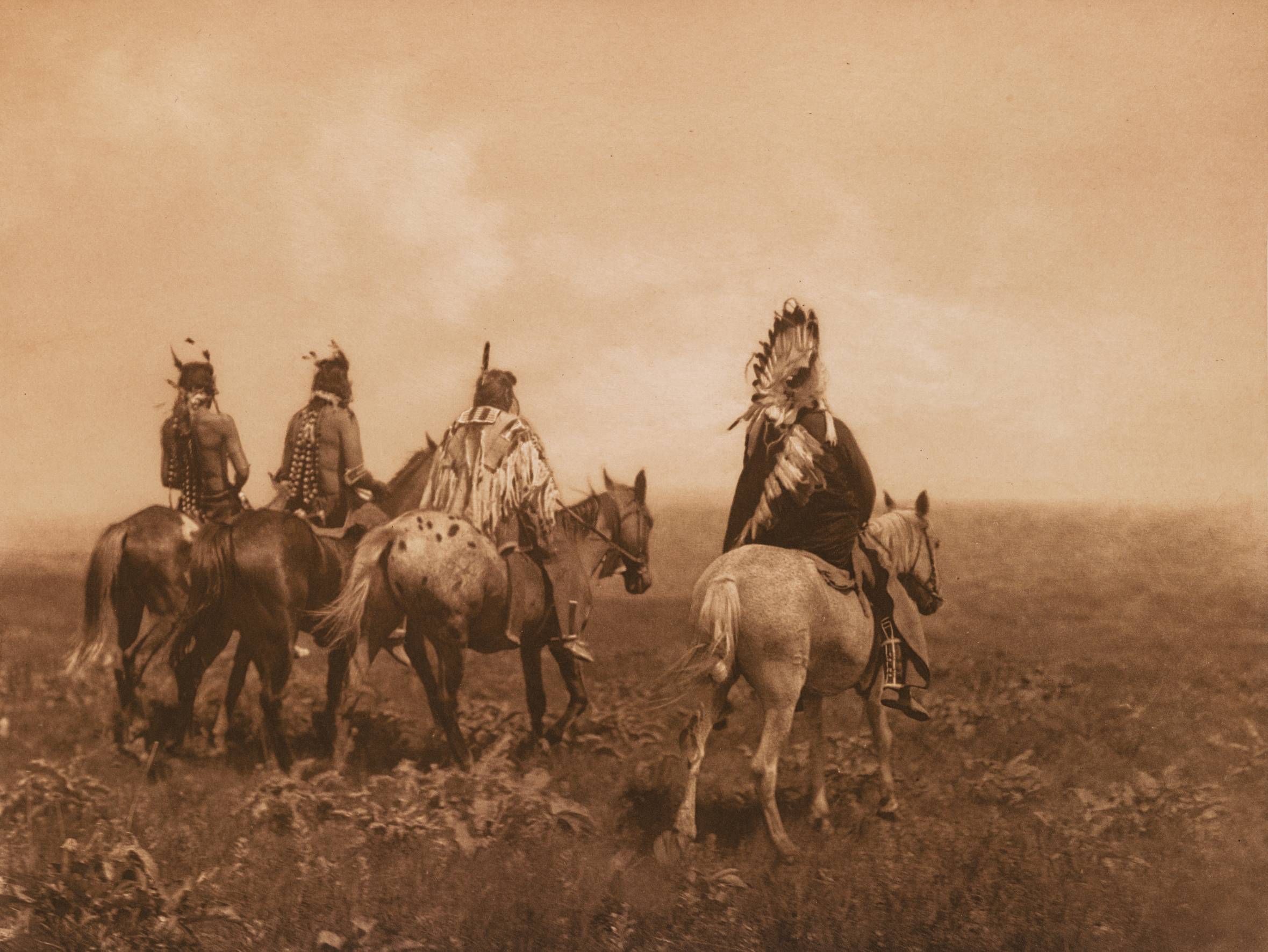

In celebration of our recent acquisition of Edward S. Curtis’ monumental publication, The Wittliff has selected more than 50 of his photographs for this special exhibition.
In 1906 Curtis received a large grant from financier J.P. Morgan to record, through photography and the written word, all Native American tribes who maintained some degree of their “primitive” lifestyle. Native Americans were almost wholly confined to reservations by Curtis’ day, and he felt passionately that their culture should be chronicled before it disappeared altogether.
The North American Indian is one of the most ambitious photographic projects ever undertaken. Published from 1907 to 1930, its 20 bound volumes contain documentation of more than 100 tribes’ languages, stories and songs, along with extensive illustration with Curtis’ photographs. The volumes are paired with large portfolios, from which the framed prints in this exhibition were selected.
(below) The Chief and His Staff -- Apsaroke by Edward S. Curtis, 1905, published 1909

A tremendously gifted artist, Edward S. Curtis made many unforgettable images, and his photography is enjoying a surge of popularity today. Yet Curtis manipulated many of images by retouching his negatives and created “inaccurate” photographs by using the same clothing, accessories or blankets for multiple tribes.
For these reasons, Curtis is now regarded by some as a notorious “faker,” and he is dismissed for romanticizing Native Americans by eliminating signs of Western influence, especially at a time when their forced assimilation into Western culture denied their rights and dignity.
Nevertheless, many Native Americans today defend Curtis’ images, often as they are the sole depictions of their forebears, but also because Curtis gave his subjects a dignity they likely did not experience in their daily lives.
Come see the exhibition and decide for yourself!
- Facebook
- Twitter
- Instagram
- Youtube
Email List